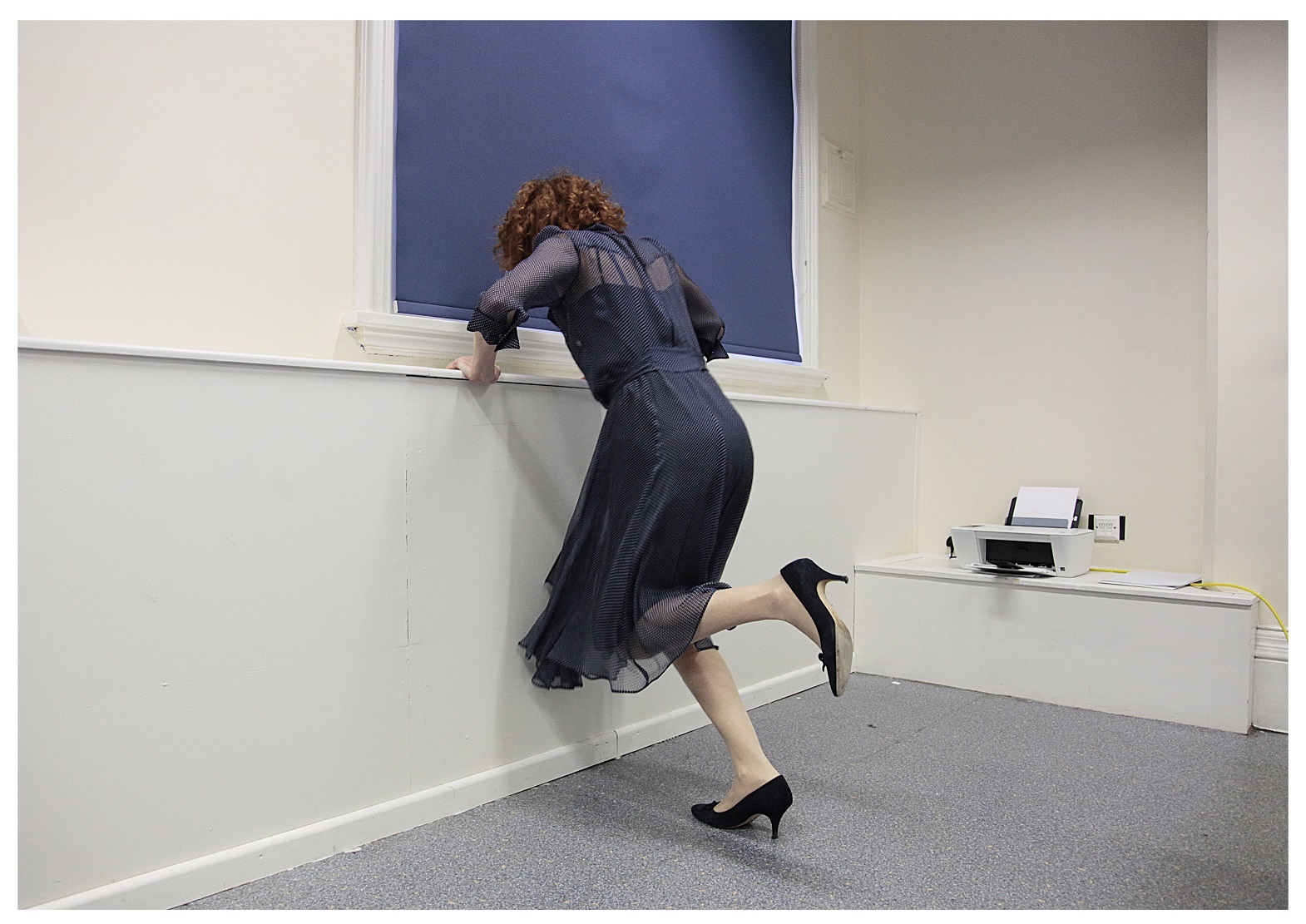
Photo Julian Hughes
Vanity of vanities, all is vanity… French performance artist Chris Dugrenier, in the process of reflecting on how things will be after her death, has assembled all her worldly goods into a pile – a total of 2,201 objects, accumulated over 18 years. These are not actually here, in front of us (other than a French-English dictionary, singled out to represent the crux of her life as a French woman living in England) but are documented on-screen – the time-lapse footage showing the pile growing, and later shrinking…
The list includes 342 books, 11 pairs of shoes – and a hell of a lot of pens. She loves pens. This making of an inventory of worldly possessions forms part of an artistic investigation into the process of drawing up a last will and testament– a process that will culminate in the artist making her own legally binding will, here and now, as witnessed by audience members. To which end, she asks if anyone has a pen. I volunteer mine. ‘Nice pen,’ she says – a rare moment of direct audience engagement in a show that otherwise struggles a little with how it is pitched, the performer staying behind what feels like a glass wall for much of the time, despite the lack of stage, proximity to audience, and bright overhead lighting. The tone is performance-lecture, which at times is fine and fitting – when it works, it works well, for example, in the more poetic sections in which we are given Forced Entertainment-style lists and litanies. Ways to die, for example: piano falling on head, spider bite, falling into a crevice…
There are also short, minimalist movement sections – a candle held in a Victorian candlestick is danced with, whilst on-screen the handwritten pages of ancient wills turn, and a voice-over recites the words of a man who wishes his body to have all its fat removed and this to be made into a candle to be the light of his loved one’s life for one last time. At other points in the show, we get the story of the man who stipulates that his wife will only inherit after a substantial amount of time spent with her ‘yakety-yak’ mouth taped up. Then there’s the anonymous man who leaves a legacy in five parts, to be used to create annual awards in literature, medicine, physics, chemistry, peace, and economics. Mr Nobel, we presume…
Other sections – the more prosaic ones in which the performer tells us of her process of making her inventory, writing a will, and ruminating on what will happen to her goods after death – would benefit from a stronger, more direct engagement with the audience. Which is why the pen moment works so well – suddenly the piece feels alive, present. The subsequent signing and sealing of the will wakes us up to the awareness that this isn’t pretend, this is for real. For this is indeed a last will and testament that, with due revoking of all previous wills and codicils, and witnessed by two people who are not related to the artist and who are not beneficiaries of said will, is thus legally binding. Until it is revoked – which will happen the next time the show goes out…
Wealth’s Last Caprice shows a rich and thorough research process, resulting in a piece that is bursting with interesting facts and premises, and many well-realised aspects. But as seen here, it feels more like a showing of research than a fully developed show. I enjoy the way the content of old wills is integrated into the piece. I like that she is wearing her own wedding dress, and her reflections on what she will leave to her husband and sisters are moving. The exposure of fears about death and musing on what a will can be (farewell, postscript, revenge) are all good and interesting. I’m less engaged by the story of the objects, as there seems to be little of anything original being said. There is reflection on the pointlessness of accumulation and worthlessness of worldly goods – but we all know we can’t take it with us.
It doesn’t as yet feel that Chris Dugrenier has found the heart of the piece. Or at least, it feels as if the heart should be the making of the will, and how this relates historically to other will-making. This is the interesting aspect – the reflection on the accumulation of life’s stuff’ feels secondary. And ‘stuff’ has been dealt with so thoroughly by so many other artists, similarly pursuing a Vanitas / Memento Mori theme. To mention just a few: Kristen Fredrickson’s Everything Must Go (in which the artist creates a show about emptying her father’s house after his death) springs to mind, as does Michael Landy’s Break Down (the notorious making of an actual physical inventory of Landy’s worldly goods – 7,227 items in his case – which are then destroyed). Then there’s Geoff Sobelle’s extraordinary The Object Lesson, in which the audience are immersed in a room full of junk… The moral being: go there with complete conviction or don’t go there.
There is no director, dramaturg or outside eye credited on Wealth’s Last Caprice – and it could be that further development with a collaborator would take the show the extra mile it needs to go. There is a very good show in here awaiting liberation.

